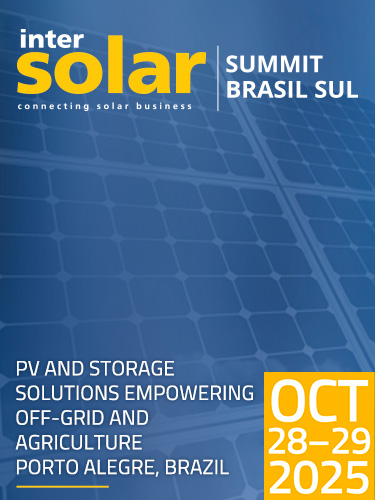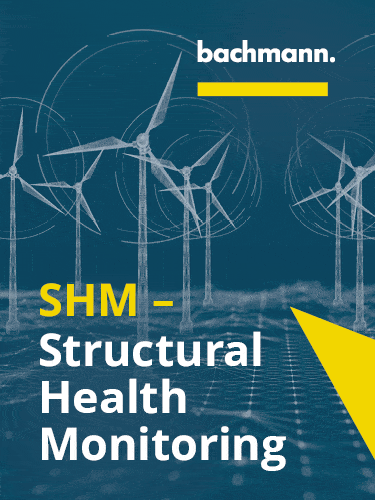News
DNV New Power Systems report: Global grid infrastructure to double by 2050 to meet surging electricity demand
- Global grid infrastructure will double by 2050 due to a surge in renewable energy sources and a doubling of global electricity demand.
- By 2050, 70% of the world’s electricity will come from solar and wind, necessitating market and regulatory adjustments to support flexibility-enhancing technologies.
- Li-ion utility-scale batteries will dominate the storage market, providing three times more capacity than hydropower and pumped storage by 2050.
- Grid-enhancing technologies could increase existing grid capacity by 10-50%, but this is contingent on targeted financial incentives and a significant digitalization upgrade.
- Artificial Intelligence (AI) is already being used across the power value chain and could accelerate the transition to decarbonized electrification, provided robust cybersecurity and trust in AI-enabled systems are ensured.
Oslo, 18 June 2024 — Global electricity demand is set to double by 2050 as the world’s reliance on fossil fuels diminishes, according to DNV, the independent energy expert and assurance provider.
Released today, DNV’s New Power Systems report finds that the pathway to a decarbonized energy system requires significant grid expansion, solutions for grid congestion, and new business models to accommodate rising electricity demand and generation from wind and solar. The report also concludes that grid expansion is affordable, thanks to growing efficiencies in grid technology and the increased electricity load, with DNV expecting global grid charges passed to consumers to remain stable or decline in the long term.
The growing demand for electricity and renewables
Global economic growth and the electrification of transportation, heating, and industry are primary drivers of the anticipated surge in global electricity demand. Additionally, the development of data centers, notably for AI applications, is also expected to contribute to this increase. At the same time, AI holds considerable potential to introduce efficiencies in both the provision and use of power.
By mid-century, electricity will constitute 37% of global final energy use, a substantial rise from 20% in 2023. This upswing is accompanied by a dramatic shift towards renewable energy, with wind and solar anticipated to generate half of the world’s electricity by 2040 and 70% by 2050. The decarbonization trajectory predicts that nearly 90% of electricity will be sourced from non-fossil sources by 2050.
Flexibility and demand-response
The growing share of renewable power requires flexibility and a robust system of demand-response: as variable renewable energy sources (VRES) expand ninefold, the need for short-term flexibility will double. Fluctuating demand from sectors like heat and transport calls for new ancillary services such as synthetic inertia products and fast frequency response and adapting market and regulatory frameworks to support these technologies is critical for a sustainable energy future.
In this new model, advanced technologies such as AI and automated activation of demand response will assist grid operations and market predictions: “Deep digitalization, including the application of AI, is crucial for managing the increased complexity of a renewable-dominated power system,” explains Remi Eriksen, Group President and CEO at DNV. “So there will be a rapid growth in both information technology and operational technology in the coming years which must be supported by a robust approach to risk management, particularly on cyber security, to reap the benefits of the new power systems.”
Energy storage is another core system component needed to address the intermittent nature of renewable energy sources, provide grid balancing, and manage load. Lithium-ion battery technology is set to play a dominant role in this segment, offering three times more storage capacity than hydropower and pumped storage by 2050. However, achieving the necessary level of flexibility will require innovative market designs and advanced tariff schemes to incentivize automated demand-response, vehicle-to-grid (V2G) and behind-the-meter storage systems. Power-to-hydrogen value chains are a critical market element for renewable generation, and need to be scaled through concerted investment efforts by all stakeholders.
Grid expansion is both necessary and affordable
A key bottleneck in the energy transition is the expansion of the electrical grid. Global grid capacity needs to grow 2.5 times its current size, with annual expenditure on grids more than doubling to USD 970 billion by 2050. While Grid Enhancing Technologies (GETs) offer potentially significant temporary relief, the long-term solution lies in accelerating the construction of new grid infrastructure and advanced controlling systems, which are currently hampered by permitting timelines, the scarcity of human and material resources, and financial constraints.
Despite a rise in global grid expenditures from 15% to over 25% of annual energy expenditure by 2050, efficiencies in grid technology and increased electricity distribution will likely keep consumer grid charges stable or declining in most regions. Only four out of ten regions might see an increase.
Predicting future unit electricity costs is challenging due to varying tax treatments and government incentives. However, the continuous decline in renewable power costs suggests that consumer prices are unlikely to rise. Electrifying end-use sectors like transport and heating will further enhance efficiencies and cost savings, leading to lower overall household energy bills in high- and middle-income regions. In low-income regions, while absolute household energy expenses may slightly increase, rapid GDP growth will offset this rise. This “green dividend” offers an opportunity for governments to accelerate the energy transition and maximize the benefits of green electricity.
A systemic approach to the energy transition
“We believe in systems thinking, looking at the big picture, to consider how energy is generated, transmitted, consumed, and stored across all energy carriers,” comments Ditlev Engel, CEO for Energy Systems at DNV. “There will be no transition without transmission. The new energy system will require data-driven solutions and policies that address all interconnections, from permitting to the integration of AI and cyber-resilience. Planning for a new wind farm must include a strategy for grid connection; similarly, GETs and new wire integrations require IT upgrades at most control centers.”
He adds: “The pathway to a decarbonized power system is clear: renewables integration and grid expansion require significant investment, innovation, coordination, and commitment from all players, especially governments. As the world moves towards a greener future, addressing these challenges with a systemic and forward-thinking approach will be essential for a successful energy transition.”
DNV’s Energy Transition Outlook 2023 serves as the foundation for this report, with additional insights provided by experts in demand modeling, power grids, new market models, digitalization, and AI. The research delves into evolving market mechanisms, highlighting the importance of flexible and resilient grids. Insights include strategies for market design, addressing congestion, costs trajectories and expanding transmission and distribution networks.
For more information or to access the full report, please visit https://www.dnv.com/publications/new-power-systems-report
About DNV
DNV is the independent expert in risk management and assurance, operating in more than 100 countries. Through its broad experience and deep expertise DNV advances safety and sustainable performance, sets industry benchmarks, and inspires and invents solutions.
Whether assessing a new ship design, optimizing the performance of a wind farm, analyzing sensor data from a gas pipeline, or certifying a food company’s supply chain, DNV enables its customers and their stakeholders to make critical decisions with confidence.
Driven by its purpose, to safeguard life, property, and the environment, DNV helps tackle the challenges and global transformations facing its customers and the world today and is a trusted voice for many of the world’s most successful and forward-thinking companies.
In the energy industry
DNV provides assurance to the entire energy value chain through its advisory, monitoring, verification, and certification services. As the world’s leading resource of independent energy experts and technical advisors, the assurance provider helps industries and governments to navigate the many complex, interrelated transitions taking place globally and regionally, in the energy industry. DNV is committed to realizing the goals of the Paris Agreement, and supports customers to transition faster to a deeply decarbonized energy system.

.gif)

















